16 Games, Jan. 6/7, 2024
566 +2/232\\
Week 18: 67 touchdowns, 4 ATDs (+2 oopsies)
DAL@WAS: Airball
Each week we marvel at the fact that ball carriers can avoid touching any fragment of an end zone’s 57,600 square feet and be awarded a touchdown.
Here 5-foot-10 Washington defensive back Sean Chandler (48) makes a solid open-field tackle on 6-2 Cee Dee Lamb of Dallas, one of football’s elite wide receivers. Chandler does his job; he prevents Lamb from reaching the end zone.
Yet Chandler gets no praise for his efforts because Lamb was able to briefly poke the ball into the end zone’s airspace, thus breaking the mystical Unseen Plane. As all fans of rulemaking lunacy can tell you, that equals touchdown.
Because fans have just accepted this ruling for decades, it just seems natural to nearly everyone. But seriously, in a contact sport where just to get credit for a catch a receiver must have two feet down inbounds, does this look worthy of six points to you? Maybe so, but it sure doesn’t to us. Hocus Bogus Rating: 5
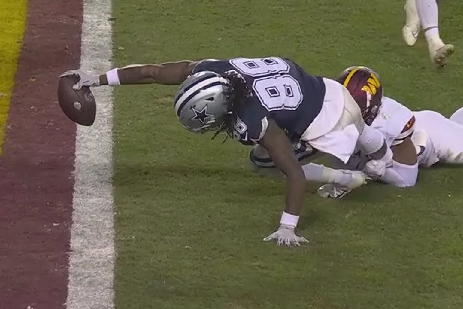
Video and game image: Fox Sports
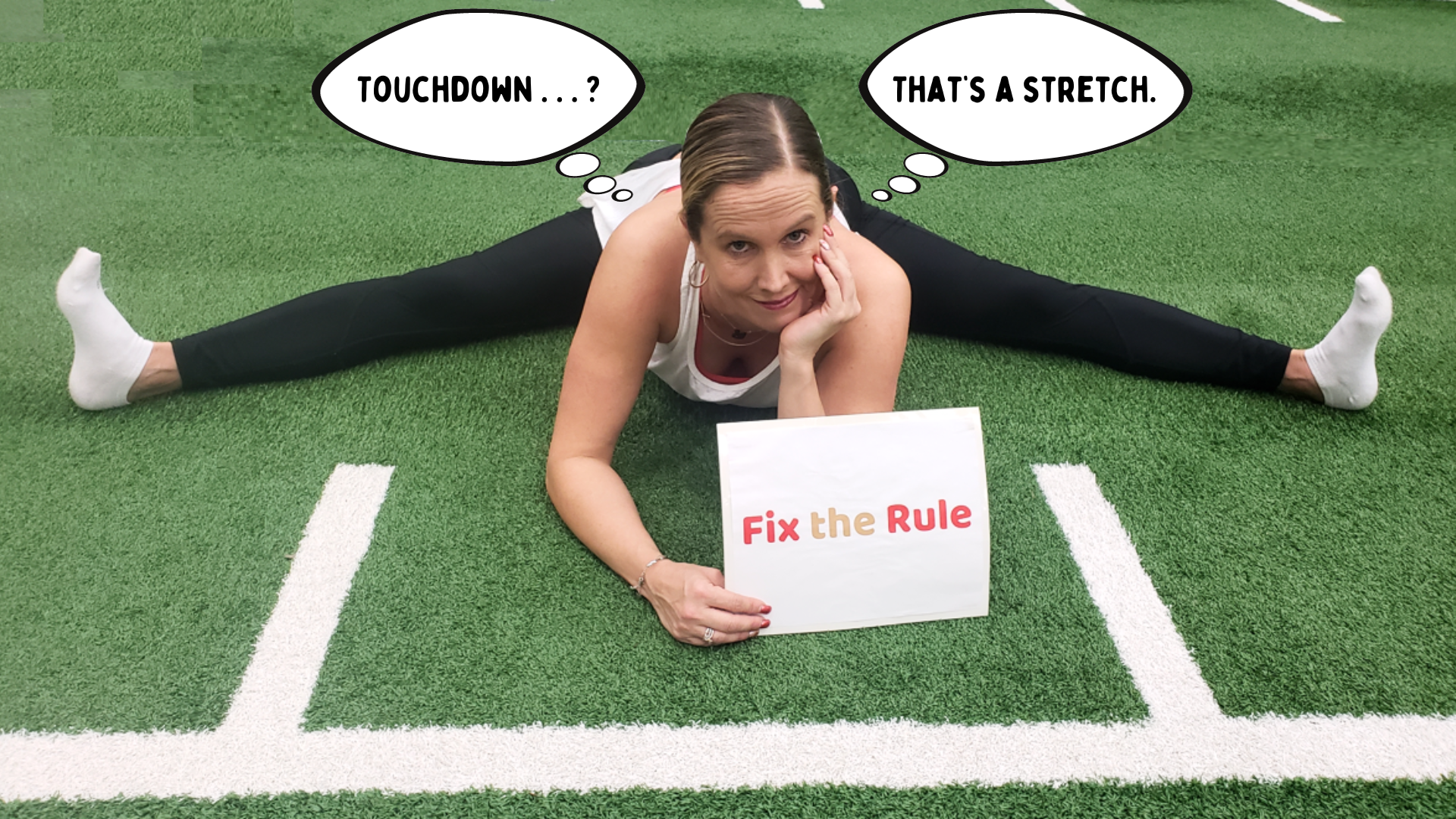
FixtheRule.com
MIN@DET: Taking cuts
An end zone is 160 feet wide, or 53.3 yards. The break-the-plane rule conveniently allows ball carriers to make it even wider when they float over the goal line (meeting the criterion for a break-the-plane touchdown), then land as far out of bounds as they like. So handy.
Had Detroit’s Jahmyr Gibbs caught a pass with his feet in this position, he would be ruled out of bounds. But as a runner who has been judged to have broken through the Great Invisible Plane, he is handed six points. How about that? Rating: 4.5
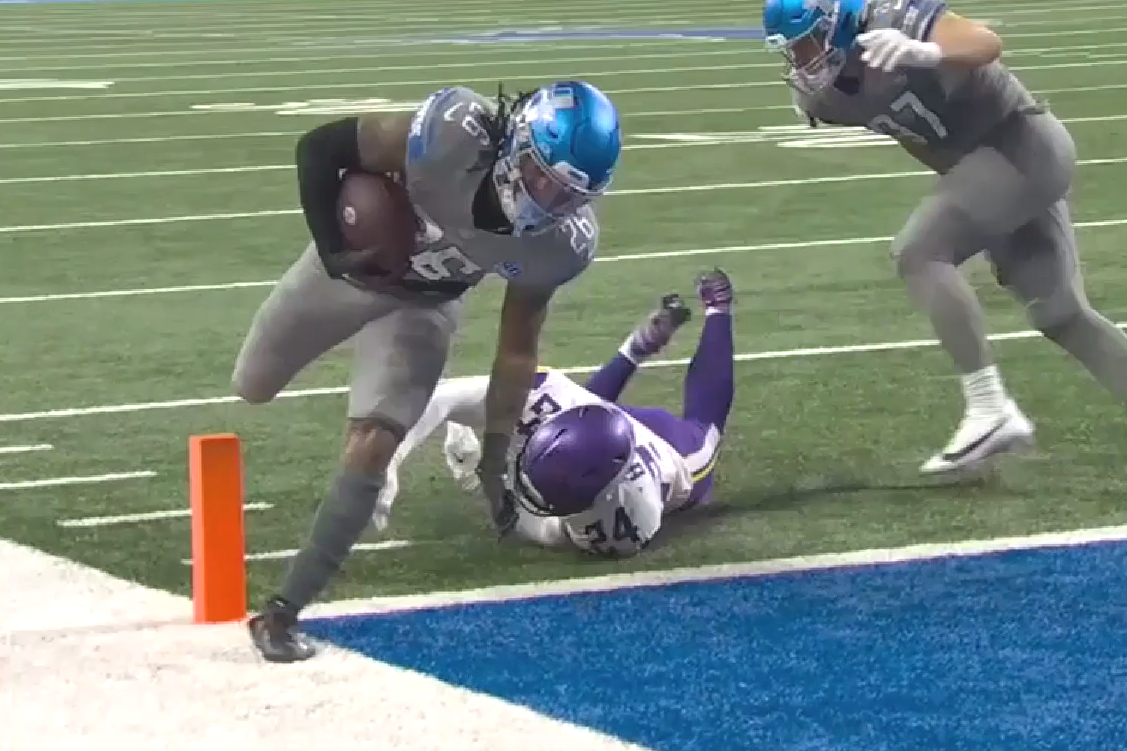
Video and image: Fox Sports/WXYT-FM
ATL@NO: Up in the air
The rule we propose requires 1) some physical component of the ball carrier, even if it’s just the edge of his shoe, to make contact with the end zone and 2) the ball to at least intersect some portion of the goal line or beyond. We do believe the ball needs to break the plane, but it also needs to be possessed by a player who has made inbounds contact with the end zone.
Fans have become conditioned to believe a play such as Kendre Miller’s is a touchdown. It is a technical touchdown due to the existing break-the-plane rule, but we say this should not be ruled a score.
Miller is flat on his back inside the 1 and outside the goal line. Waving the ball into a wee portion of the end zone’s airspace lacks the mission-accomplished vibe that is achieved when a ball carrier steps into the promised land of the end zone. Would moon landings be viewed as great achievements if astronauts had just hovered over the lunar surface for a few minutes and then left?
What about forward progress, you ask? We believe that rule works between the goal lines. But when the end zones are involved, that special surface where points are generated, a high standard needs to be set. If you want six points, find a way to get into the end zone and earn them.
Even on this play officials on the field initially ruled Miller short of the end zone. That’s because he was. His effort, while certainly commendable, fell short of the goal. Credit to the defense. We say, line up and try again. You want six points? Find a way into the end zone and earn them. Rating: 4.5
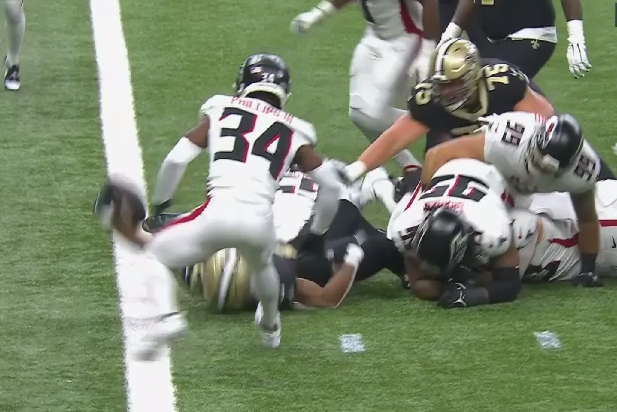
Video and image: CBS Sports
DEN@LV: Not a flopper; a plopper
Why is this not a touchdown? We concede it looks pretty legit at first glance, but our rule stipulates a ball carrier must make contact with the end zone to be awarded six points.
Here Denver’s Javonte Williams merely crowd-surfs toward the end zone and finishes the play lying on the back of his pulling left guard, Ben Powers (74). While we can understand if people roll their eyes at this judgment call of ours, we steadfastly assert that the end zone, football’s sacred space where points are bestowed, must be contacted in some way by the ball carrier. If there is no touch, we say there is no touchdown. Rating: 1
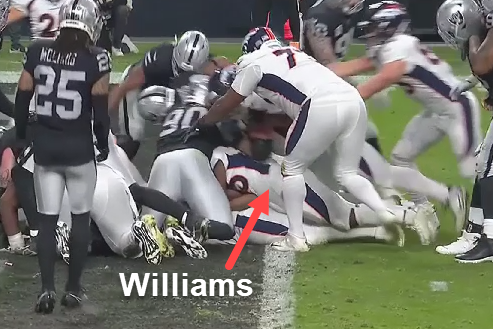
Video and image: Fox Sports
Oopsie No. 1: Old habits die hard
Jacksonville’s Trevor Lawrence has seemingly assigned himself to supplant noted bunnyhopper Drew Brees and serve as his generation’s great Leaper of the Line.
Twice previously in the 2023 season—in Week 13 and Week 12—he converted his silly-looking but effective springboard surge into touchdowns while never seriously intending to reach the end zone. He pulled the same trick in the Wild Card Round and Week 16 of the 2022 season. He’s just poking for points, and he’s been successful at it.
On this occasion—switching to his leap on his own, as reported by Sports Illustrated—he fell short again (not unusual), but this time never got close enough to poke the ball into the Great Invisible Plane so he could be awarded another ersatz touchdown.
The ball was turned over to Tennessee on downs. The Jaguars lost by eight and, as a result, missed the playoffs. “It’s unfortunate and it’s something I can learn from,” Lawrence said.
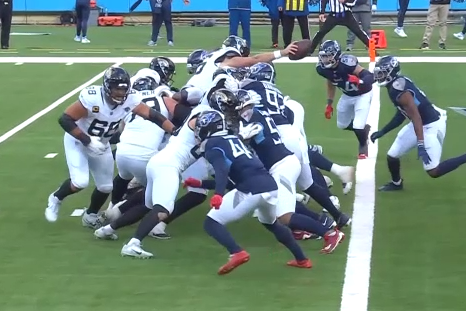
Video and image: CBS Sports
Oopsie No. 2: High and dry
Carolina’s DJ Chark might have been hoping for a highlight-reel moment on this play. He got it, just not the kind he would have preferred.
Chark must have figured if he got anywhere near the pylon with the ball, refs would give him a touchdown because refs tend to signal touchdowns on most plays involving a pylon. So take a leap and anticipate things will go your way.
That was before he got popped by Tampa Bay safety Antoine Winfield, Jr., (31) at the 2, knocking the ball loose before he got past the pylon. The Bucs recovered the loose ball. Carolina went scoreless in this TD-free 9-0 game.
Moral of the story: Ball carriers should aim for the end zone, not pylons.
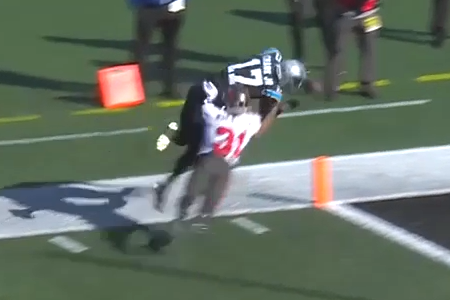
Video and image: Fox Sports
